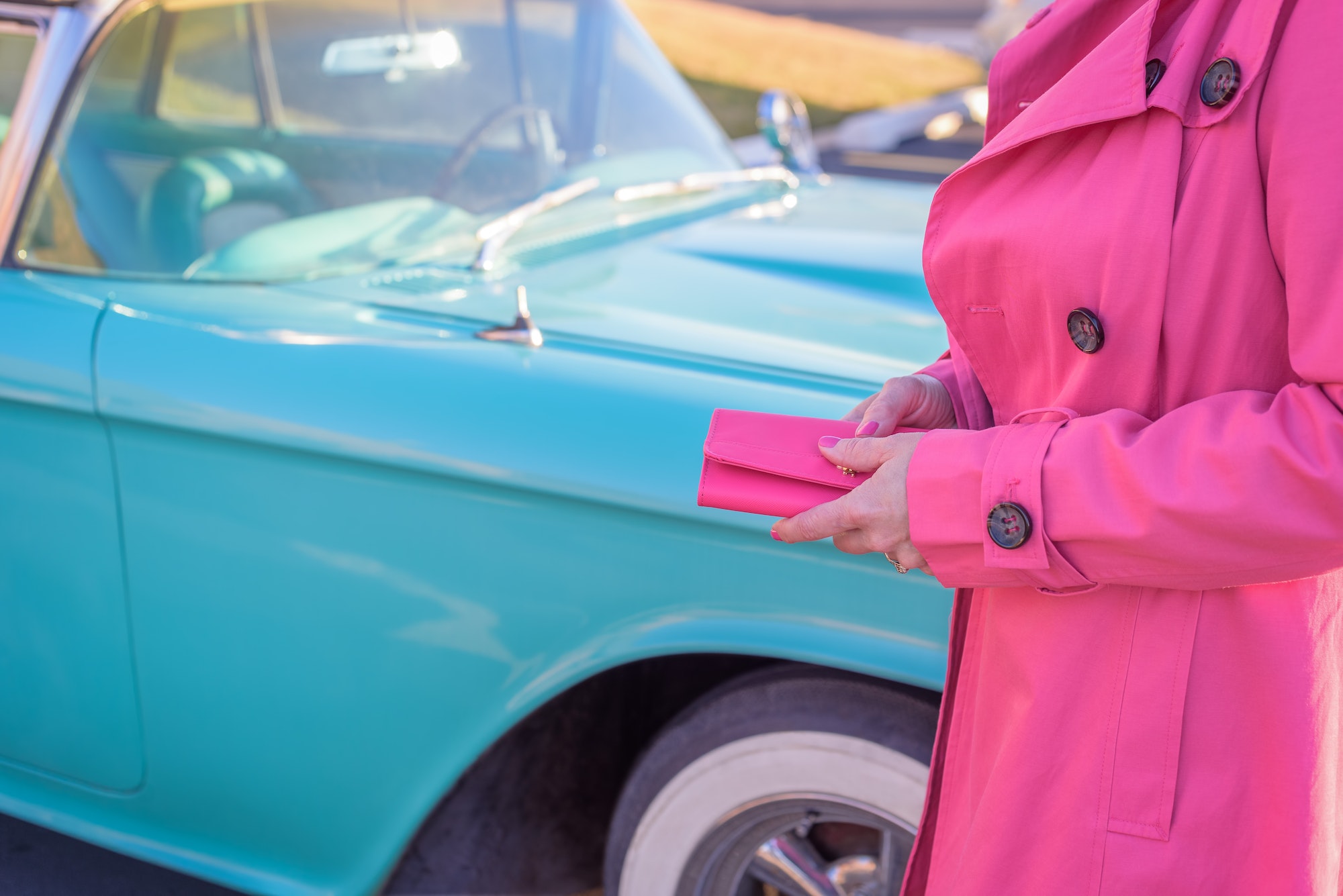
Ever wondered how to protect your precious classic car? You’re not alone.
It’s crucial you understand the ins and outs of insuring these valuable vehicles. We’ll explore key differences between standard and classic car insurance, factors affecting premiums, and tips for making the right choice.
Let’s navigate this road together so you can enjoy your cherished ride without any worries.
Key Takeaways
- Age, condition, rarity, and historical significance determine the value of classic cars.
- Classic car insurance covers the agreed or guaranteed value of the vehicle, ensuring full coverage in case of a total loss.
- Factors such as the age, make and model, maintenance, and storage conditions affect the premium of classic car insurance.
- When insuring a classic car, it is important to opt for Agreed Value coverage, consider spare parts coverage, choose a specialized insurance provider, and be aware of mileage restrictions.
Understanding the Value of Classic Cars
You’ve got to understand that the value of classic cars isn’t just about their age, but also their condition, rarity, and historical significance. These factors play a crucial role in determining the car’s worth.
Let’s talk about Classic Car Restoration first. It’s more than just a hobby; it’s an art form. The process involves meticulous care and knowledge to restore these beauties to their former glory. A well-restored classic car can increase its value exponentially. But remember, not all restorations are created equal. A poorly done job may decrease its value instead, so choose your restoration expert wisely.
Now consider rarity – imagine stumbling upon a 1957 Mercedes-Benz 300SL Gullwing or a ’67 Shelby GT500 Mustang! These are rare finds indeed. If you own one of these gems, you’re holding onto gold because as supply decreases (and they aren’t making any more), demand and price often increase.
Then there’s the historical significance – vehicles once owned by celebrities or used in iconic movies carry an added premium due to their unique provenance.
Investment Potential is another side of the coin for classic cars enthusiasts. While it’s true that some classic cars appreciate over time, don’t forget that maintaining them requires significant investment too – from insurance costs to repairs and storage fees.
So before diving into this world of chrome and nostalgia, take time understanding these aspects: the condition, rarity, history behind them, and potential returns on your investment. With careful consideration and informed decisions, owning a classic car can become much more than just a passion project; it could be a lucrative venture as well.
Key Differences Between Standard and Classic Car Insurance
It’s important to understand the key differences between standard and classic car insurance, as they can significantly impact your policy coverage and premiums.
Standard car insurance policies typically cover your vehicle for its actual cash value (ACV), which decreases over time due to depreciation.
Classic car insurance, on the other hand, covers your vehicle for its agreed or guaranteed value, ensuring you’ll receive the full insured amount in case of a total loss.
When it comes to policy coverage, classic car insurance usually includes special provisions tailored to meet the unique needs of classic cars.
For instance, many policies offer roadside assistance specifically designed for breakdowns related to old parts and systems present in vintage vehicles. They also often include coverage for expenses involved in restoring or preserving these beauties.
However, there are certain insurance limitations you should be aware of with classic car policies.
These might include restrictions on how much you can drive your classic ride annually – typically not more than 5,000 miles. Some insurers also require that your vintage gem is parked in a secure garage when not being used for shows or exhibitions.
Understanding these differences will help you choose the right type of coverage for your prized possession.
It’s vital to discuss these options with an agent who has experience insuring classic cars – they’ll provide detailed knowledge and tailored advice based on their expertise in this field.
Remember: The goal isn’t just finding any policy; it’s about securing one that understands and appreciates the true value of your four-wheeled treasure.
Factors Affecting the Premium of Classic Car Insurance
When deciding on a policy, you’ll find that factors like age, make and model of your vintage automobile, its condition, and how often you drive it can drastically affect the cost of your classic car insurance premium. These are termed as ‘Premium Influencers’.
Staying informed about these influencers gives you an excellent place to start when hunting for Insurance Discounts.
Let’s break down some key influencers:
- Age of Vehicle: Vintage automobiles typically attract lower premiums compared to newer models.
- Make and Model: Certain makes or models are more costly to insure than others due to limited availability of parts or higher theft rates.
- Condition: A well-maintained classic usually means lower repair costs in case of accidents hence decreasing the premium.
- Frequency of Use: Classic cars used sparingly have a reduced risk exposure leading to lower premiums.
- Storage Condition: Proper storage reduces risks associated with weather damage and theft.
Now, you’re probably wondering how this knowledge could get you some discounts. Well, insurers often reward good practices. If your classic car is impeccably maintained, driven infrequently – mostly for exhibitions or club activities – stored securely when not in use; then chances are high that you will enjoy considerable Insurance Discounts.
Remember also that joining a recognized classic car enthusiast club can earn you additional discounts since members often share beneficial tips on maintaining classics reducing overall risks.
With these insights at hand, navigating through the maze of insuring your prized possession should now be less daunting!
Tips for Choosing the Right Classic Car Insurance
Choosing the right policy for your vintage auto isn’t as difficult as you’d think, especially if you know what to look for. It’s all about understanding the coverage options and selecting insurance providers who specialize in classic cars.
First, let’s talk coverage options. You should always opt for Agreed Value coverage for your classic car. Unlike standard policies which consider depreciation over time (Actual Cash Value), Agreed Value ensures that in case of total loss, you’re paid a previously agreed amount. This is paramount since classics often appreciate in value.
Secondly, consider adding spare parts coverage. Vintage autos often need specific, rare parts that can be costly to replace. Having this additional protection saves you from unexpected expenses when restoring your vehicle to its original glory.
As important as selecting the right coverage is choosing an insurer who understands classic car needs; not all insurance providers are created equal in this respect. Look for providers with a strong track record insuring vintage vehicles and positive client feedback.
Ask potential insurers about their claims process – it should be straightforward and hassle-free. Remember to inquire how they determine the value of your car; it should involve expert appraisal rather than generic market trends or book values.
Lastly, don’t forget mileage restrictions – some policies limit how much you can drive your classic car annually without affecting the premium rate or policy validity.
Case Studies: Real-Life Scenarios in Classic Car Insurance Claims
You’re about to delve into some real-life scenarios where vintage car owners filed insurance claims, shedding light on the process and potential challenges. These stories are not just anecdotal experiences; instead, they serve as important lessons for all classic car enthusiasts.
In one case, a ’67 Mustang owner had his beloved ride damaged during a local classic show. The claim process was smooth because he’d taken the time to properly document the vehicle’s condition prior to the incident with photos and receipts validating recent restorations.
Another instance involved a ’55 Chevy Bel Air that got caught in an unexpected hailstorm. The owner had chosen agreed value coverage, so despite this unusual claim, she received full compensation for her loss.
Consider these key takeaways from these anecdotes:
- Thoroughly documenting your vehicle’s condition can expedite claim processes.
- Opting for agreed value coverage can protect you against unforeseen losses.
- Attending organized events like shows or rallies may require extra coverage.
- Unusual claims aren’t always a hassle if your policy is comprehensive.
However, there was also an unfortunate scenario where an ’82 Corvette owner who hadn’t updated his policy after completing major upgrades faced difficulties getting full compensation following theft. This stresses how crucial it is to constantly review and update your insurance policy.
While every situation differs slightly, understanding these examples can help guide you through any future engagements with insurers. Always expect the unexpected when it comes to insuring your treasured classic ride!
Frequently Asked Questions
What Are the Potential Tax Implications of Insuring a Classic Car?
When insuring your classic car, you must consider the potential tax implications. If your vehicle is an investment, its insurance could impact your taxes.
You might find some tax deductions if the car’s used for business purposes. However, remember that any payout you receive from a claim may be taxable income.
It’s crucial to consult with a tax professional to understand all possible effects on your financial situation and get tailored advice for your circumstance.
Can I Use My Classic Car as a Daily Driver Under Its Insurance Policy?
Don’t count your chickens before they hatch. Your classic car’s insurance policy might have limitations preventing you from using it as a daily driver.
Insurance companies often set usage limits to keep costs down and preserve the vehicle’s condition. If you exceed these, expect your insurance costs to skyrocket.
It’s vital to carefully review your policy terms or consult with an insurance specialist to understand any restrictions placed on your classic beauty’s everyday use.
How Does Classic Car Insurance Handle Modifications and Customizations to the Vehicle?
When you modify or customize your classic car, insurance companies often reassess its value and coverage limitations. They’ll consider the cost of each addition, how it impacts the car’s overall worth and whether it alters the vehicle’s original character.
It’s crucial to keep them informed about any changes so they can adjust your policy accordingly. Remember, not every modification increases value; some might even decrease it!
Always consult with your insurer before making major alterations.
Are There Special Considerations for Insuring a Classic Car That Is in the Process of Being Restored?
Yes, there are special considerations when insuring a classic car under restoration. Insurance coverage should account for the increasing value as work progresses.
You’ll want to ensure you’re covered for the full restoration costs, not just the car’s current value. It’s crucial to keep your insurer informed about upgrades and improvements made during the restoration process.
Most insurers offer comprehensive plans tailor-made for such situations, so make sure you explore those options!
How Does the Claims Process Differ for Classic Car Insurance Compared to Standard Car Insurance?
You might think that claiming on classic car insurance is a headache, but it’s not as different as you’d expect. Claims documentation still plays a huge role, just like in standard car insurance.
The main difference lies in dispute resolution. With classic cars, the value can be subjective and disputes may arise. It’s crucial to have an agreed-upon value with your insurer to avoid such issues making the claim process smoother.
Conclusion
You’ve seen the unique considerations for insuring your classic car. It’s not just about its age, but also its value and how you use it.
Remember, standard car insurance may not cover your vintage beauty adequately. So, choose your policy wisely and consider factors affecting the premium.
Learn from others’ experiences to avoid pitfalls.
Now that you’re equipped with knowledge, go ahead and secure the right insurance for your cherished classic ride!




